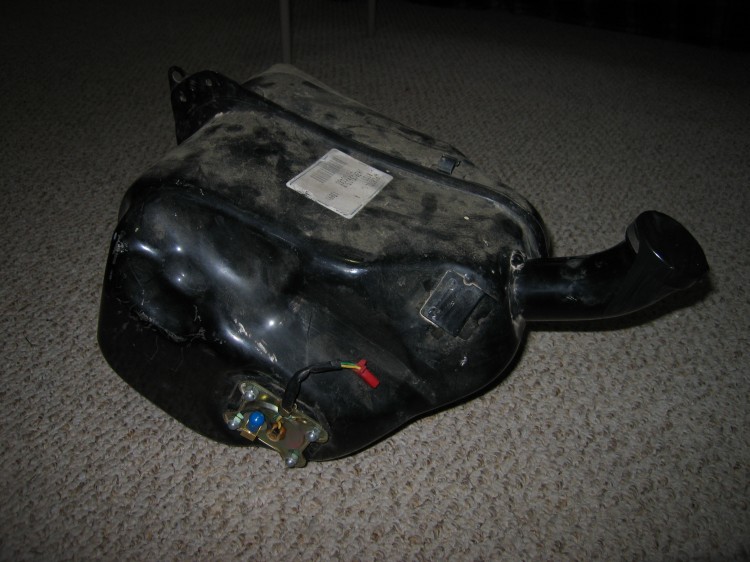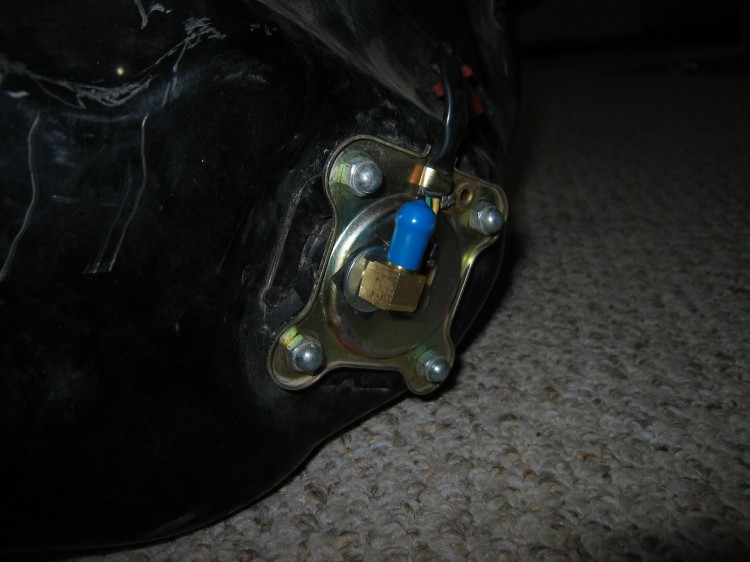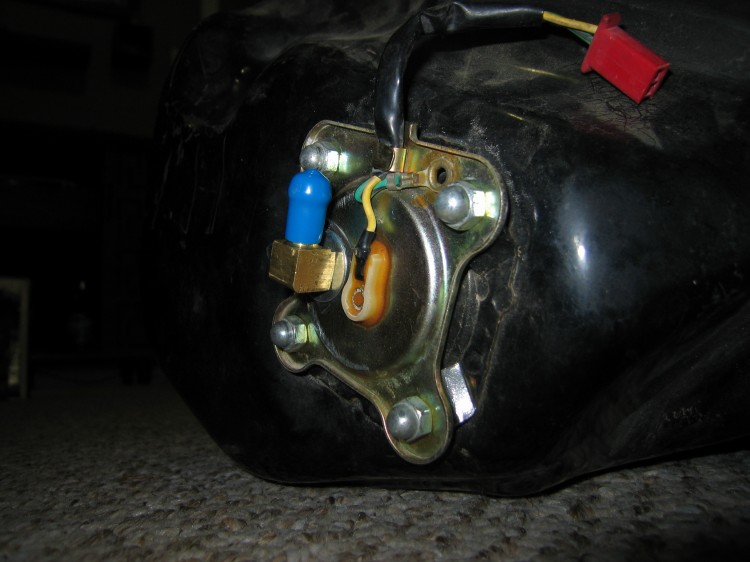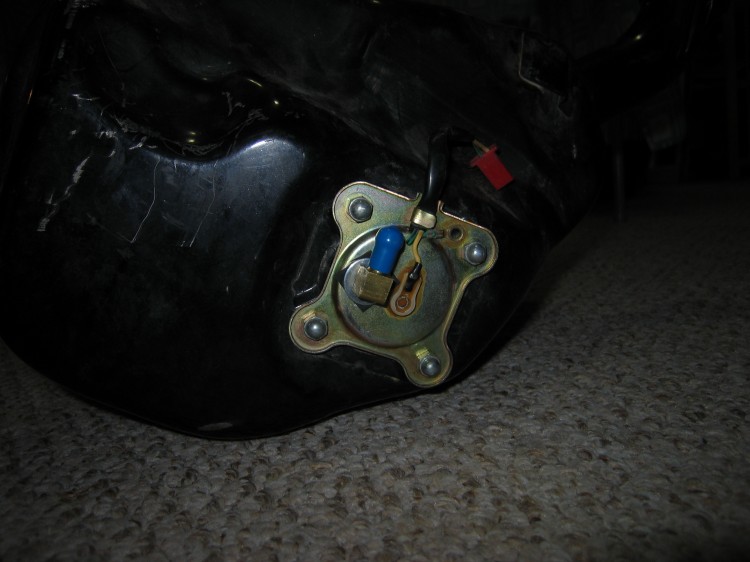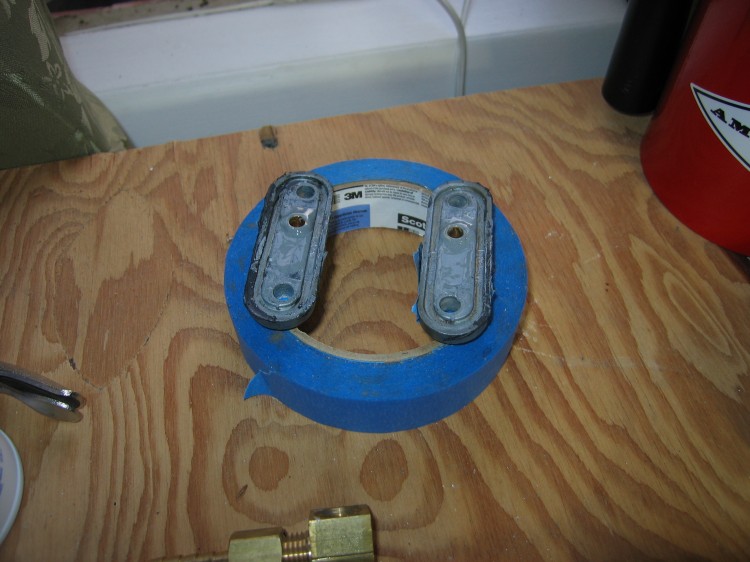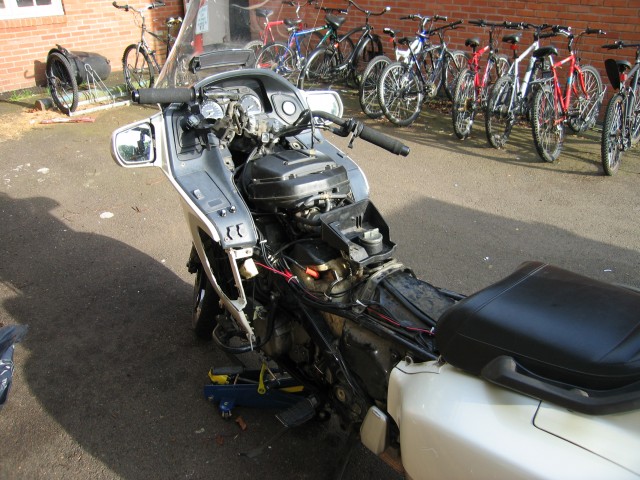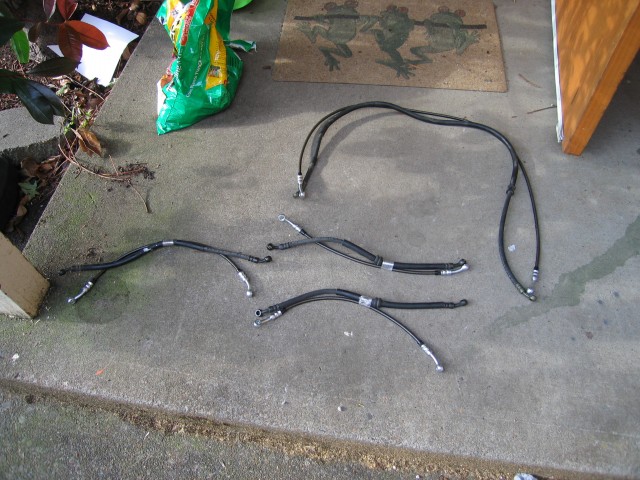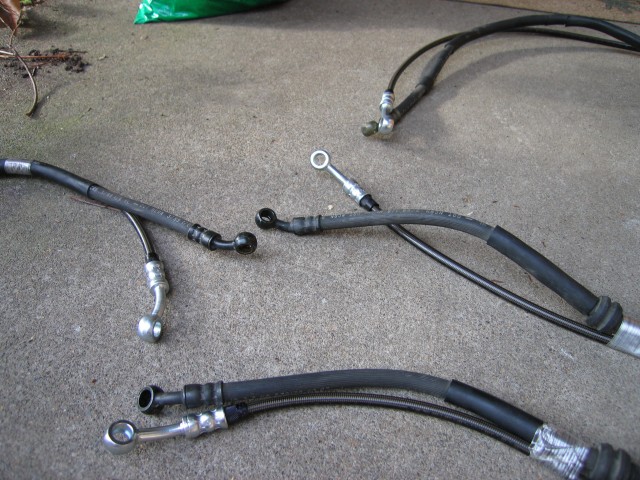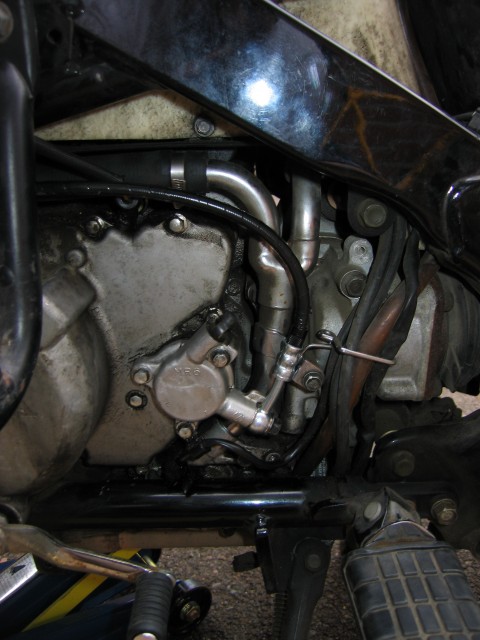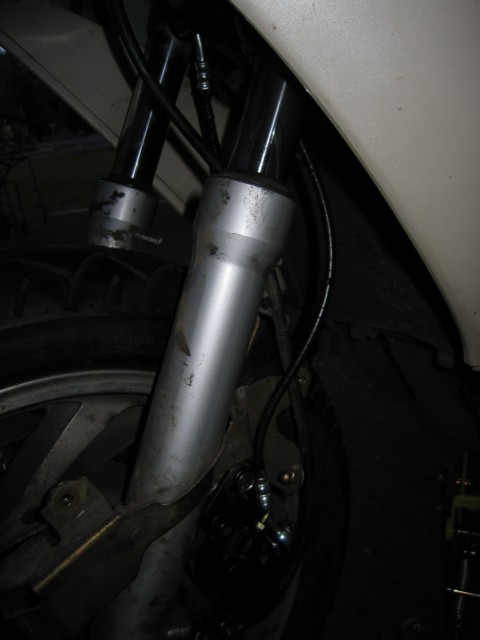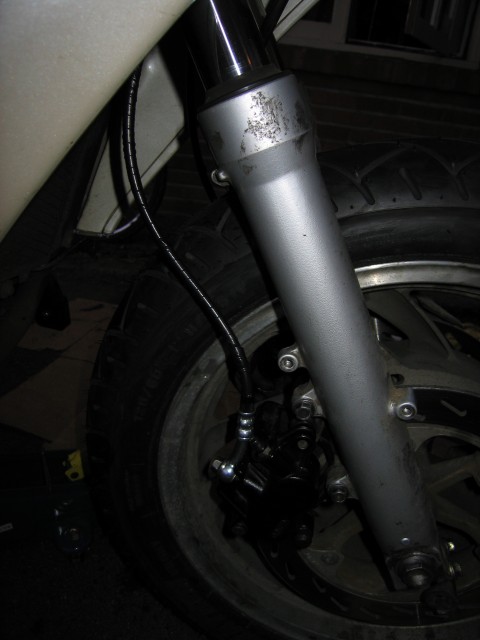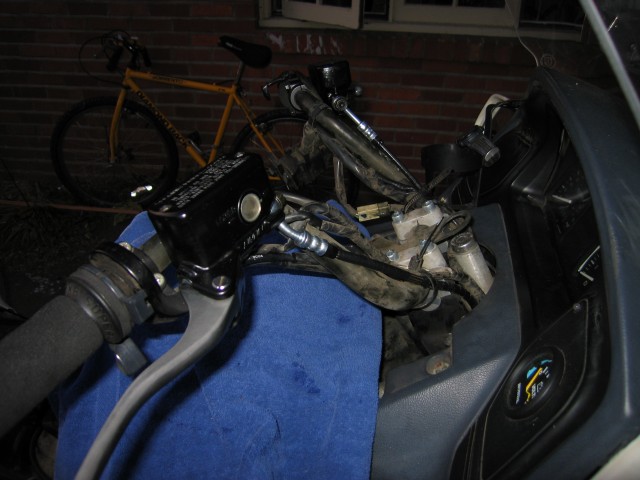Over the weekend, I finally had some time to work on the PC800 fuel injection project again. After months of planning to weld on the fuel tank and insert an internal tank pump from a CBR600RR, I finally decided against it due to several factors. First, the shape of the tank is difficult to weld upon. Second, I would have had to recess the tank which would effectively reduce the total volume of fuel that I can access. Third, the internal pump would have taken up more room and thus reduced how much range I could get out of the tank. Therefore, I decided to do an external pump. At the moment, I am eyeing a Walbro GSL393 155 lph pump that can run at the pressure (~45 to 50psi) I am after. They run roughly $100-150 depending upon which website I purchase from. I will also have to purchase a fuel pressure regulator (more on that later). My main concerns are that the pump will use too many watts and overload the PC800’s electrical system, and that the pump will need a low pressure feeder pump depending upon where I can locate the unit.
After making the decision to go with an external pump, I went about modifying my spare PC800 fuel tank and fuel level sensor to accept a fuel return hose. The brass fitting with the blue cap above is the result. I had to cut some metal around the O-ring flange on the tank and drilled a hole through the fuel level sensor housing as well. After a few runs to the hardware store, this is the resulting solution. I have yet to test it for leaks beyond letting some gasoline sit in the tray of the fuel level sensor. A full gasoline test will be coming up when I have the time to take a couple of gas cans to the station and have them filled. I don’t anticipate any leaks but one never can be too cautious.
This modification will not affect the fuel level sensor’s operation.
Now that I have decided to go this route, I will need to purchase a fuel pressure regulator. Looking around online, it appears that I will be paying somewhere between $50 (used on ebay) and $150 for a decent unit. If I choose the right one, I will also have the ability to have an external fuel pressure gauge. Naturally, I want more gauges on my dash. I expect that to run another $50 or so. Hopefully in the next month, I will be able to find the money to purchase these components. However, first I need to finish modifying the carburetors into throttle bodies with injection ports. That is going somewhat slowly as I still haven’t figured out how to shape the injector ports properly. I have some ideas on that but haven’t come to a full resolution yet.

